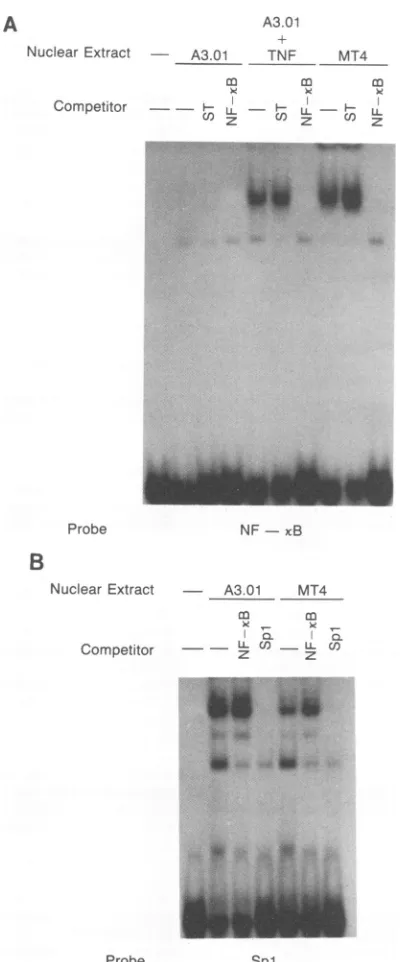Variable role of the long terminal repeat Sp1-binding sites in human immunodeficiency virus replication in T lymphocytes.
Full text
Figure



Related documents
The occurrence of these genotypes is shown as the number and percentage of specimens from which each genotype was detected as the dominant virus and the codominant (in
Northern blot hybridization of total liver RNA from the same animals with a GSHV DNA probe showed two abundant transcripts of 2.1 and 3.7 kb, identical in size to the major WHV and
Shown are comparisons of NK cell killing (mean 6 SEM of four experiments) of HPV E7-expressing cell lines (CaSki, SiHa, HeLa, HFK-1321, and 18NCO), E1A-transfected HeLa cells (M18),
We show here that there is packaging of the endogenous Mtv-l virus, which is expressed at high levels in the lactating mammary glands of C3H/HeN mice, by the virions of exogenous
Herpes simplex virus (HSV) virions contain at least two regulatory proteins that modulate gene expression in infected cells: the transcriptional activator VP16 and the virion
The cell line tion of the VP1 residues involved in B-cell antigenic sites 1 generated in response to PV2 was poliovirus specific and and 3, the amino acid variability of this
Phenotypic analysis of recombinant viruses indicated that 75 amino acids from the N-terminal part of HIV-1-NDK p189" protein together with the HIV-1-NDK envelope glycoprotein
Human T-cell leukemia (or lymphotropic) virus type II (HTLV-II) was isolated from eight HTLV-.. seropositive patients, six of whom were also infected with human immunodeficiency